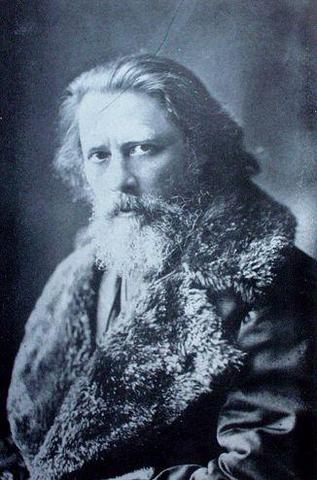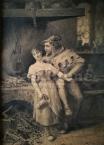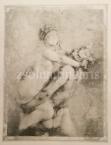Zichy, Mihály ( 1827-1906)

Hungarian painter, draughtsman, lithographer, illustrator, teacher. Descended from an old family of Magyar nobility dating from the thirteenth century (1260). Younger brother of Antal Zichy (1823–1898), Hungarian politician and honorary member of the Magyar Tudományos Akadémia. Born at the family estate (now Zichy Mihály utca 20) in the village of Zala in Somogy comitatus in western Hungary (1827). Studied under Venetian artist Giacomo Antonio Marastoni in Pest (1842) and Ferdinand Georg Waldmüller in Vienna (1843–47). Invited by Grand Duchess Elena Pavlovna to St Petersburg (1847), where he taught drawing to her daughter Grand Duchess Ekaterina Mikhailovna (1847–49) and married a local girl called Alexandra Yershova (1849).
Worked as a retoucher in the St Petersburg studio of Viennese daguerreotypists Joseph and Heinrich Weninger (from 1850) and published an album of lithographs entitled Scènes du Caucase (1853). Illustrated the coronation of Tsar Alexander II (1856), drew caricatures for Nikolai Stepanov’s Acquaintances satirical magazine (1857–58). Member of the Academy Fridays (1857) and the Society of Russian Watercolourists (1872), founding member of the Fellowship of Russian Illustrators (1891). Academician of watercolour painting (1858), honorary member of the Imperial Academy of Arts (1898). Court painter (1859–73, 1884–1906). Visited Paris and Munich (1862) and Hungary, Germany, Belgium, France and Scotland (1871). Lived and worked in Paris (1875–80) and Zala (1880–81), returning to St Petersburg (1882) via Trieste, Odessa, Crimea and the Caucasus (1881). Illustrated Nikolai Gogol’s Taras Bulba (1880–81), Mikhail Lermontov’s The Demon (1880–81), Imre Madách’s The Tragedy of Man (1887) and the ballads of János Arany (1894–98). Attended the coronation of Tsar Nicholas II and witnessed the Khodynka Tragedy (1896).
Drew a series of erotic drawings (1898–99) published posthumously in Leipzig (1911). Learnt of the death of his only son Miklós while with Tsar Nicholas II in the Crimea (1900). Met Maxim Gorky (1903), who suggested that he illustrate a Russian translation of Imre Madách’s The Tragedy of Man. Died in St Petersburg (1906) and buried at Kerepesi Cemetery in Budapest (1906) with a gravestone sculpted by Alajos Stróbl (1916). Contributed to exhibitions (from 1844), including exhibitions in Vienna (1844–45), Society of Russian Watercolourists (1855–86), Imperial Academy of Arts (1870s), Exposition Universelle in Paris (1878) and one-man shows in St Petersburg (1869, 1880, 1885, 1907, 2005–06), Vienna (1878, 1881) and Budapest (1888, 1902, 1952–53, 1977, 2007–08).


